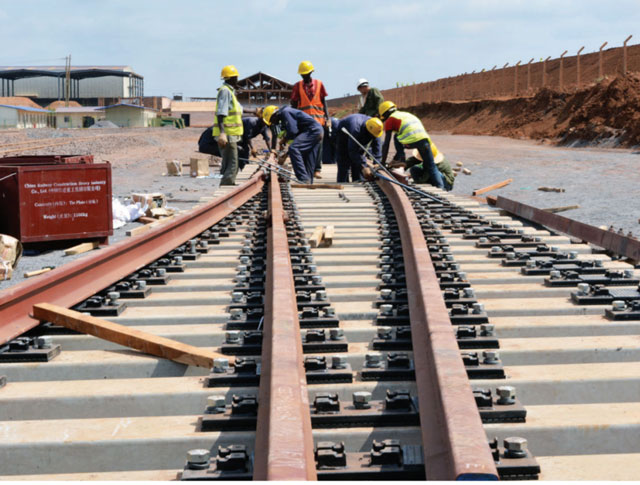
BUDGET: The EAC countries are looking at reducing the cost of doing business
Kampala, Uganda | ISAAC KHISA | Governments in the East African Community seem to be determined to ease the cost of doing business in the region as they allocate massive budgets to infrastructural developments in the new financial year that start next month.
The national budget estimates presented by the country’s finance ministers on June 08 shows that Tanzania plans to spend US$14.2 billion, Uganda US$8 billion and Rwanda US$2.5 billion during the financial 2017/18.
The region’s largest economy, Kenya, which announced its budget estimates in March owing to the upcoming general election slated for August, plans to spend US$25billion. However, Burundi’s budget reading is not aligned to that of the EAC bloc.
Out of these estimates, the governments have proposed to spend between 27.9-44% of their national budgets towards infrastructural developments – works and transport as well as energy and mineral developments financed mainly through borrowing amidst the surging public debt.
Enormous investments in infrastructural developments in the bloc has of recent seen some of the country’s public debt rise to more than half of their Gross Domestic Product in the past three-four years, with the hope that more revenue will be generated in the long term.
For instance, Uganda plans to invest in various road projects especially in the oil rich areas of the Albertine region ahead of the oil production by 2020, the Standard Gauge Railway (SGR) and airports, with most of the funds secured from the Asian nations especially China.
Uganda is already investing US$ 2.3bn in Karuma and Isimba hydropower projects, whose construction are at 51% and 63% respectively. This is aimed at cutting the cost of electricity by more than half to US$5cents per unit upon completion.
Minister for Finance, Planning and Economic Development, Matia Kasaija, said with the availability of reliable electricity and improved road and other infrastructure developments, the economy will grow by ‘leaps and bounds’.
“To attain the middle income goal we have set ourselves, business cannot be as usual,” he said. Uganda hopes to achieve middle income status in the next three years.
Kenya and Tanzania are already investing in SGR, with the former having unveiled the first leg of the rail line linking the port of Mombasa and Nairobi covering 472km on May 30.
The rail network is to be extended to Kampala in Uganda, Kigali in Rwanda, Juba in South Sudan, Addis Ababa in Ethiopia, and Vurra to the Democratic Republic of Congo.
Tanzania started building the 300km Standard Gauge Railway in April from the Indian Ocean port of Dar es Salaam to Morogoro, which line is expected to be extended to Port Mwanza on Lake Victoria to link Uganda at Port Bell. The rail network is also expected to link Burundi and Rwanda.
Similarly, the Rwandan government plans to prioritize massive infrastructure development and promotion of locally made products in the next financial year, according to the 2017/2018 budget.
“Economic plans enshrined in 2017/2018 budget will focus more on promoting investments in infrastructure growth and promotion of locally made products. Increased investments in infrastructure and made in Rwanda products will accelerate our country’s goal to reach middle income status,” said the country’s Minister of Finance and Economic Planning, Claver Gatete.
He said the government plans to focus on the construction of the Bugesera International Airport, upgrading Kamembe Airport, improving and sustaining quality of road network through construction, rehabilitation and maintenance of road networks across the country.
The new budget is also set to fast track the installation of key transmission lines across the country to increase electricity access to rural areas.
This comes at the time most of economies in the region performed below the expectations due to a tough economic environment.
The new budgets also coincides with the countries in the bloc embracing inward looking strategies with Uganda promoting ‘Buy Uganda, Build Uganda’ while Rwanda and Tanzania intensifying ‘Made in Rwanda’ and ‘Be Proud, Buy Tanzanian’ campaigns, respectively. Kenya is focusing on ‘Buy Kenya, Build Kenya.’
Tax policies
With regard to tax policies, Uganda unlike Kenya, Tanzania and Rwanda appears not to have identified a specific commodity or sector where it has a competitive advantage to offer better incentive for growth.
For instance, Uganda has decided to exempt Bujagali power project of income tax until June 2022 to in a bid to lower the electricity tariffs to the consumers.
At the moment, Bujagali charges US$11cents per unit and considered very high especially to the manufacturing sector, rendering the local firms uncompetitive.
In addition, the government is to exempt income tax to the Savings and Credit Cooperative Society (SACCO) till 2027 but the shareholders income from the saving schemes are not tax exempted.
This also applies to professional bodies established by law such as Institute of Public Accountants of Uganda, Uganda Law Society.
On the other hand, Kenya, with its budget themed “Creating jobs, delivering a better life for all Kenyans” has moved to cement its motor vehicle industry with the reduction of corporation tax from 30% to 15% for new motor vehicle assemblers.
Recently, Kenya has witnessed a wave of motor vehicle assembling firms setting up plants in Nairobi as a hub to tap into the growing vehicle demand in the region.
In January, German car maker, Volkswagen, began vehicle production at its Thika plant, just outside Nairobi, 40 years since it closed its original Kenyan plant.
The new facility at the moment receives part of assembled Polos and Vivos from Volkswagen South Africa’s (VWSA) for final assembly in the country.
 The Independent Uganda: You get the Truth we Pay the Price
The Independent Uganda: You get the Truth we Pay the Price



